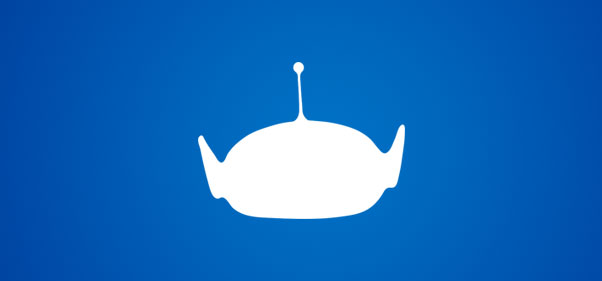
Special to Upcoming Pixar
Was Joe Ranft too good to be true or truly too good?
Ever since his untimely and tragic death on Aug. 16, 2005, I’ve pondered that question. I’ve talked to his colleagues and friends as well as read dozens of stories and blog posts.
I’ve discovered several funny anecdotes, but everyone who crossed his path thought he was a great guy. He’s highly regarded by professional colleagues like John Lasseter, Pete Docter, John Musker and members of the story teams at Pixar as well as people he grew up with like Madeline Miesen and Pete Moe. The list goes on and on. I’ve never heard or read a negative word about “the great one,” “the gentle giant” Joseph Henry Ranft.
My interest in Joe Ranft was sparked after talking with him a few times on the phone as he promoted “A Bug’s Life” and “Toy Story 2” and seeing him in some of the behind-the-scenes bonus material on Pixar’s DVD releases. He was engaging, enthusiastic, side-splittingly funny … someone you’d love to meet in person or get to know as a friend.
When I heard about his death, I joined others at the celebration of his life held on Sept. 17, 2005 at Pixar and mourned. Amid the tears — and a bit more laughter than I had expected — I learned a lot more about Joe Ranft. The celebration wasn’t just a review of his talents and achievements, but memories from colleagues about Joe’s personal integrity, his good nature, his exemplary life.
As dozens of people talked about Joe, my interest in his life grew along with the sorrow I felt for colleagues and his beloved family.
I don’t know what it is about Joe, but I identified with him, not as an artist — I can’t even draw a decent circle without a protractor or template — but as someone to emulate. He certainly became someone I considered a worthy role model.
And while I’ve gleaned a few lessons of what not to do in studying the life of another master storyteller, Walt Disney, — don’t smoke and be far more direct in praising great work — Joe’s life is filled with examples of how to be your better self every single day.
In honor of the 50th anniversary of his March 13, 1960 birth, I recently spoke with Joe’s wife, Su. She reminisced about Joe, and was quite candid about the struggles she and their two children, Jordy and Sophia, have braved. We also talked about the continuing tributes to her husband, and about Joe’s endearing legacy.
In this, Part 1 of two postings, I focus on Joe as a “great guy” and his faith.
“Yeah, he was an awesome guy,” Su said. “He was a bear to live with, but what guy isn’t? Home is the safe place where you can go and let the warts show. … There has to be someplace where you’re not on all the time, where you don’t have to be funny, a place where the gears aren’t clicking all the time.
“So his working life was different than his home life, which is why this whole thing came as such an avalanche to us because we just lived a really normal life, went to church and did school activities. We really didn’t hang out … he was just a homebody … we didn’t accept a lot of invitations to things. So to have this avalanche of adulation come roaring through the house (after his death) … we pretty much weren’t prepared for it.
“I had never Googled him. I didn’t know that I could even Google him," she continued. “We didn’t know he was the storyboard artist of his generation. How could we know that?
“If Joe had been an insurance agent, we wouldn’t keep bumping up against him. Little kids come to the door, dressed up like characters from one of his movies or you go to Wal-Mart and they’ve got sheets, sippy cups and lunch boxes. It’s really impossible to get away from it.”
I asked Su about the role faith played in Joe’s life. At the Pixar event, Pete Docter talked about how Joe had faith in a project “even when it sucked.” But Joe taught Pete and so many colleagues to simply “trust the process” as the team crafted one great story after another.
I also know Joe didn’t give up on people. He had faith in others; and, as a mentor, he helped some completely turn their lives around.
“He was raised a pretty strict Catholic in an Irish-German-Czech-Catholic family,” Su said. “And even though he was not a practicing Catholic when we were married, he never had a harsh word to say about it because it made him who he was.
“He did read the Bible, and there were so many things in there that became part of his moral ethic and his interior compass. He was interested in reincarnation and karma, all the different religions; he didn’t just confine himself to Christianity.
“Joe didn’t see success as a way to make money and go buy a fancy car, he saw success as a way to give back. And for him, the best guidance for that would have been a spiritual philosophy. And that was a huge part of his life, HUGE. He studied mythology and yoga. He belonged to a men’s group. I mean he was on his way to a spiritual retreat when he died.”
Su recalled two specific stories about Joe that illustrate just how much he was appreciated and admired by his peers. She said she used to “accuse him of being a buffer,” because everyone, even if they were upset at someone else, would gather together with Joe.
“We talked about this when we lived in Taiwan while he was working on ‘Brave Little Toaster.’ Those guys were so beat up. They worked so, so much and nerves would get pretty frayed. You know, we were in a foreign country, we didn’t speak the language, the food was strange. People who weren’t even speaking to each other, they all wanted to go to lunch with Joe.
“I know there are a lot of very talented people out there, but Joe just had that personal touch.”
Su also recalled a memory from a roast that was held for Joe’s 40th birthday.
“It was so awesome. It was very risqué, very blue and the people who couldn’t come all sent memories. One of them was about this initiation thing at ‘Nightmare Before Christmas’ and they had to run a gauntlet and they had those little foam bats. … When (assistant art director) Kelly Asbury went down through the gauntlet, they just beat him down to the floor, but when Joe went through, he just got love taps.”
Joe wasn’t just there at Disney when things took off with “Beauty and the Beast,” “Little Mermaid” and “Tarzan.” Su said he was with there through Disney animation’s “darkest, darkest days” and then when Disney “started skyrocketing back up to the top.” Then he worked on “Tim Burton’s The Nightmare Before Christmas,” before joining Pixar as it was “beginning to become this great big huge machine.”
He was at Disney when “nothing was working and then he rode that meteor. Then, the next thing you know he’s climbing aboard with Pixar and he gets on another meteor,” Su said. “Who has a career like that?”
But Joe’s work life wasn’t about box office success or personal ego and gratification. And while he may have been the star pitcher in story, he was a team player who brought out the best in everyone.
It was “always all about the people, drawing and working things out,” Su said. “But as he became more and more successful, he became more concerned about giving back.”
Colleagues talk about Joe as this wonderful, selfless guy, someone who’d give you five minutes in the parking lot at the end of a long day or someone who’d always find something to praise in a portfolio.
“Yes, and it makes them want to stay close, (besides) Joe never really lost touch with anyone because each one of those projects takes years. Those groups, they become really, really close. like soldiers in the trenches. And the animation world is a pretty tight-knit community.
I mentioned to Su that I’ve learned enough about Joe to see him as a role model. I know he was admired by many colleagues and I think he became a role model for some of them, too.
Su understood what I meant.
“I have to tell you there’s many times, especially since I’m acting on his behalf with the kids and his family, when I just stop and ask myself, ‘what would Joe do?’ And it’s always pretty clear what he would have done.”
In Part 2, Su shares her appreciation for all the “thoughts and prayers that kept the family from going under” as well several tributes to Joe that followed his death and continue. There’s a special bonus feature about Joe in the upcoming Blu-ray release of “Toy Story 2” and a book about “Two Guys Named Joe (Grant and Ranft)” by John Canemaker, due in August.
“The weirdest (tribute) was him being a category on ‘Jeopardy!’ That just blew me away,” Su said. “Either someone at ‘Jeopardy!’ was a big fan of Pixar or someone at Pixar knew someone at ‘Jeopardy!’ He was a whole category.”
Last modified: March 15, 2010

I never knew Joe Ranft personally, although I heard comments from my dad saying how sweet of a guy he was. Your article and interview makes me feel like I knew him a little better.
Thank you very much for taking the time to post this up, Mr Holzer.
Wow, Joe Ranft seemed like a truly amazing person. I wish I was able to meet him.
Thank you for writing up this article, Leo Holzer. I too feel like I know him a little now. A true inspiration.
Here are the Jeopardy questions for Joe Ranft June 11th, 2007
http://www.j-archive.com/showgame.php?game_id=1897
I feel like Joe’s friends still owe Joe Ranft something with them paying homage to him. He would have turned fifty and that would be still young in the animation world, but he had already given so much to his craft and to the animation world AND he had time to touch people’s lives. What a truly, amazing “great guy”! I can’t wait for part 2. I wish the best to Joe’s surviving family, Su, Jordy, and Sophia.